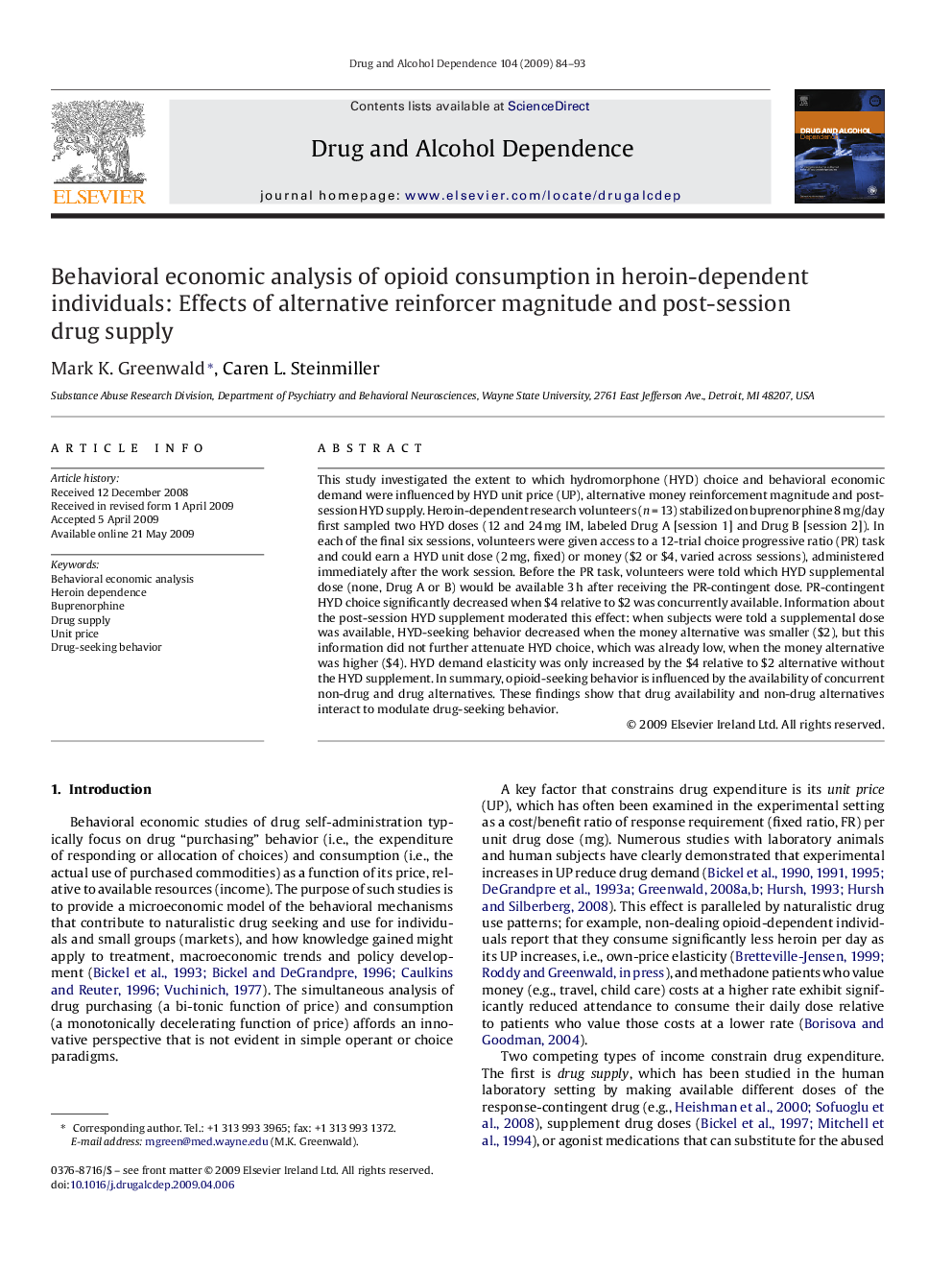| Article ID | Journal | Published Year | Pages | File Type |
|---|---|---|---|---|
| 1071071 | Drug and Alcohol Dependence | 2009 | 10 Pages |
This study investigated the extent to which hydromorphone (HYD) choice and behavioral economic demand were influenced by HYD unit price (UP), alternative money reinforcement magnitude and post-session HYD supply. Heroin-dependent research volunteers (n = 13) stabilized on buprenorphine 8 mg/day first sampled two HYD doses (12 and 24 mg IM, labeled Drug A [session 1] and Drug B [session 2]). In each of the final six sessions, volunteers were given access to a 12-trial choice progressive ratio (PR) task and could earn a HYD unit dose (2 mg, fixed) or money ($2 or $4, varied across sessions), administered immediately after the work session. Before the PR task, volunteers were told which HYD supplemental dose (none, Drug A or B) would be available 3 h after receiving the PR-contingent dose. PR-contingent HYD choice significantly decreased when $4 relative to $2 was concurrently available. Information about the post-session HYD supplement moderated this effect: when subjects were told a supplemental dose was available, HYD-seeking behavior decreased when the money alternative was smaller ($2), but this information did not further attenuate HYD choice, which was already low, when the money alternative was higher ($4). HYD demand elasticity was only increased by the $4 relative to $2 alternative without the HYD supplement. In summary, opioid-seeking behavior is influenced by the availability of concurrent non-drug and drug alternatives. These findings show that drug availability and non-drug alternatives interact to modulate drug-seeking behavior.
